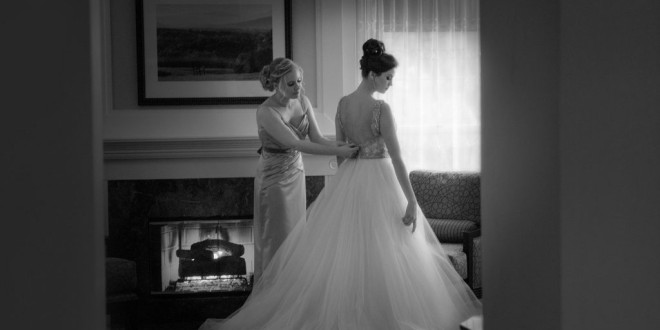[ad_1]
The neckline of your gown highlights its beauty and is a prominent feature. You can consider off-the-shoulder styles. A portrait neckline is another option, which is similar to off-the-shoulder, but has some cover for the shoulders and has a gentle scoop from one shoulder to the other. A sweetheart neckline is shaped like the top of a heart, has slightly rounded edges at the top of the bodice on each side, and accentuates your decolletage. This style is popular with fuller-sized women.
The modest sabrina neckline is cut straight across at the collarbones, and can be worn with any style of sleeve, from sleeveless to long. The halter style is usually lower cut at the decolletage and comes around the back of the neck for a backless look. A scoop neckline is u-shaped, and can be adjusted in depth to suit your preference. A scooped neckline is often paired with a similar cut at the back of the gown. The jewel neckline is round and comes up to the base of the neck. This style usually flatters petite women. The v-necked style dips in the front to a v-shape, drawing the eye away from the bustline. This style favors women with smaller chests.
The train of your gown is another element which contributes to a unique look, whether informal or majestic. As with the other parts of your gown, you have several considerations. A royal train is approximately ten feet in length and is most elegant. A cathedral train is shorter, but still lends beauty to your look. The chapel train is about five feet long. The court train runs about three feet from the waistline of the gown and is practical. The sweep train touches the floor by a few inches, and is the shortest style of train. It is versatile. The watteau train can be worn two ways: first, at the length of the rest of your gown, or second, extending to the back and gently running along the floor behind you. You should know that most lengths of train can be brought up with a button or clasp at the back of the waist after the wedding for ease of movement.
The silhouette of your gown pertains to its overall shape or outline. Various silhouettes include: the mermaid, a form-fitting shape from bust to ankles, fitting more loosely at the knees for a very unique look; the sheath, a traditional, more loosely fitting form which hugs the body; the princess, an a-shaped look, in which the material extends from the waistline, coming straight to the floor without a hooped shape; the empire gown has a waistline which begins at the base of the bust and falls loosely in a slim shape. The ball gown has a fitted waistline and a very full skirt, reminiscent of Cinderella.
The sleeves of your gown have many variations. Cap sleeves are one option, and are very short and rounded, flattering women with well-toned arms. T-shirt sleeves are longer, but still reveal more of your arms. Three-quarter length sleeves are not as long as full-length sleeves, but are practical for cooler weather. Spaghetti straps are fine for warmer weather or for a more revealing style. Sleeveless gowns are currently most popular; the neckline and material can be varied for a low-cut or straight-across (sabrina) style, or even for an asymmetrical look.
The bodice is the part of the gown between the neckline and the waist. There are several types of bodices, including: corset, empire, halter, tank and princess-line. Corsets are closely fitted, and cause the waistline to appear long and slender. Empire waists start just below the bustline and flow downward. Elizabethan gowns often had this style. Halter styles are often backless, but not necessarily so. The upper part of the dress joins at the back of the neck and is usually lower cut in front for a revealing appearance. The tank-style bodice has short sleeves and is fitted. This style favors most body types. The princess-line gown features vertical seam lines at each side, and makes for a slimming effect.
[ad_2]
Source by Lorraine Horn

